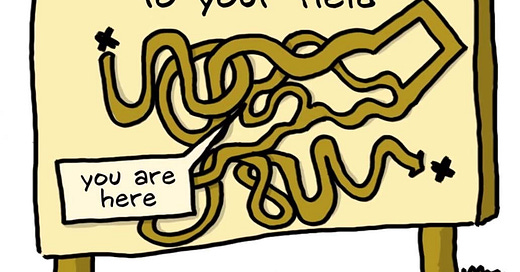Planning your next publication: 3 quick and easy steps, your ROADMAP TO SUCCESS ....
Videos in which we discuss how to prepare to write and publish your next paper: Journal selection, Outlining your paper and Steps to writing: Join our next FREE WEBINAR!! .. AND 'how to use "that" ..'
Embarking on a research article can be an exciting yet challenging endeavor. Whether you're a seasoned researcher or a novice in the field, effective planning is crucial for producing a well-organized and impactful piece of work. In this blog post, we'll guide you through a step-by-step process on how to plan your research article, ensuring that you lay a solid foundation for a successful project …..
But first this …. Our next FREE WEBINAR (all WELCOME!)
Join us to develop a solid publication strategy by identifying research gaps, filling them with your innovative findings, and selecting the right journal for your work.
In the video series in this post we discuss how to:
-Prepare yourself for writing (things you need to know before you start to write your next academic paper);
-Choose the best journal for your next article;
-Simply and easily understand the structure of an academic paper, and;
-How to easily structure and write the different sections of a paper using our easy to follow templates and tricks.
Although the content and style of academic papers varies depending on research field, peer-reviewed journals follow standard structures, procedures, and guidelines. This means that the basic facets of effective paper writing are the same, irrespective of research field.
And then …. A ROADMAP to Publication Success:
The first and most critical step in planning a research article is to clearly define your research topic. Choose a subject that aligns with your interests, expertise, and the current trends in your field. Conduct a literature review to identify existing gaps, debates, or unanswered questions related to your chosen topic.
Identify the audience for your research article – whether it's academics, practitioners, or a general audience. Tailor your writing style and language to suit the expectations and knowledge level of your target readers.
By following these steps, you'll lay a strong foundation for your research article. Effective planning not only streamlines the research process but also enhances the overall quality and impact of your work. Stay organized, stay focused, and let your passion for the subject drive the success of your research article. Good luck!
This section is sponsored by Virtus Publishing: You can get 20% off self-publishing your book with Virtus ….
In a series of posts within posts, our friends at Virtus Publishing will provide tips and advice covering many aspects of publishing. This next series will be an ongoing selection of language tips, covering areas that many copy editors (and authors) find difficult. These will be short and to the point.
Virtus Publishing Language Tip #9: Repeating “That” Can Be OK
When we are writing, editing, or proofreading content it can be difficult to catch the nuances, which is a big reason errors creep in. And the problem has become even more pronounced as more and more people rely too heavily on the countless AI tools that are out there (instead of just reading carefully). All of these tools have one thing in common: They do not understand context.
This brings as to the unusual case of when the word “that” can be repeated. It isn’t as noticeable in conversational English, but when written some people (and almost all tools) will flag it as wrong.
Here’s an example of sentence that was flagged as an error in an article to be published in a journal:
Here we show that that does not generalize.
There are some cases where the repeated “that” can be wrong, but like so many issues in English, it depends on the context. The example above, however, is perfectly fine and grammatically correct.
Here’s a simple two-sentence example.
The sky is blue.
The fact that that is true doesn’t mean it isn’t sometimes orange.
The second sentence is absolutely correct from a grammatical standpoint. The second “that” means this:
The fact that the sky is blue is true doesn’t mean it isn’t sometimes orange.
The second “that” replaces “the sky is blue” because repeating it isn’t necessary since it comes in the very next sentence. If the original fact being cited is in close proximity, what the writer/speaker is referring to is understood.
The important distinction here is that in this example the first “that” is a conjunction, while the second is a pronoun.
Let’s look at the second one first, as defined in Merriam-Webster’s Unabridged Dictionary. As always, the end of the quoted material is denoted by the box (∎):
1that
pronoun \ ˈt͟hat
, t͟hət \
plural those \ ˈt͟hōz
\
1a : the person, thing, or idea pointed to, mentioned, or understood from the situation : the one indicated
<who is that>
<that is my father>
∎
So in our example, the fact that “the sky is blue” is indeed “the person, thing, or idea pointed to, mentioned, or understood from the situation.”
For the first one, here’s the edited definition from Merriam-Webster’s Unabridged Dictionary. I edited to stick with the relevant aspect:
3that
conjunction \ t͟hət
, (¦)t͟hat
\
1a(1) —used as a function word to introduce a subordinate clause that is a noun equivalent:
<that many historic houses … are rapidly disappearing for lack of care has been emphasized by several organizations — Report: (Canadian) Royal Commission on National Development>
∎
This repeated “that” is very common in conversational English. It looks funny when written, but can be correct.
When you hear a native speaker use it, the first “that” tends to be quick and the emphasis (shown bold) is placed on second “that,” like this:
The fact that that is true…
It’s mission critical to avoid reading sentences too quickly and then robotically assuming that something that initially “looks” funny is incorrect. The context is what determines whether it is correct.
Like this post? Follow Virtus Publishing on LinkedIn!
Have you ever wanted to publish a book? Virtus Publishing’s self-publishing services can make it happen!
A global service provider, Virtus has the industry experience and dedicated staff to turn your book idea into reality. Send an email to david@virtuspublishing.com to set up a free consultation. Mention the keyword “Sky” and receive 20% off your first order.
Don’t forget to join us on Thursday 15th at 10.00 GMT and learn more about developing a solid publication strategy by identifying research gaps, filling them with your innovative findings, and selecting the right journal for your work.







